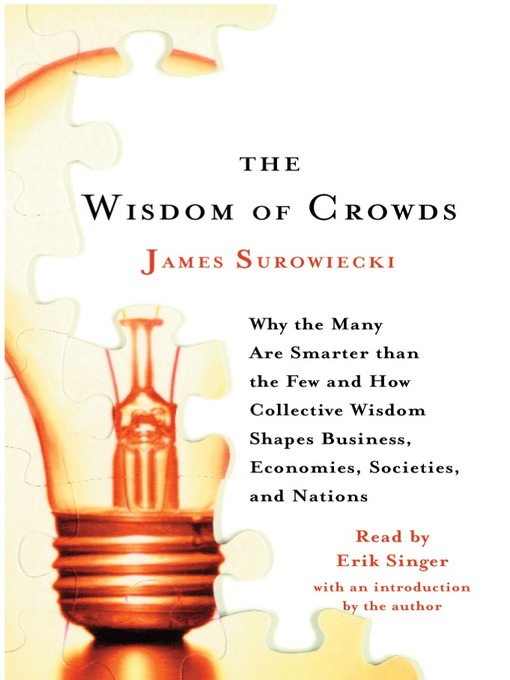-
Description
-
Creators
-
Details
-
Reviews
With boundless erudition and in delightfully clear prose, Surowiecki ranges across fields as diverse as popular culture, psychology, ant biology, behavioral economics, artificial intelligence, military history, and politics to show how this simple idea offers important lessons for how we live our lives, select our leaders, run our companies, and think about our world.

- James Surowiecki - Author
- Grover Gardner - Narrator
OverDrive Listen audiobook
- ISBN: 9780739353851
- File size: 274547 KB
- Release date: October 17, 2006
- Duration: 09:31:58
MP3 audiobook
- ISBN: 9780739353851
- File size: 274837 KB
- Release date: October 17, 2006
- Duration: 09:31:58
- Number of parts: 8

Loading
Formats
OverDrive Listen audiobook
MP3 audiobook
subjects
Languages
English
